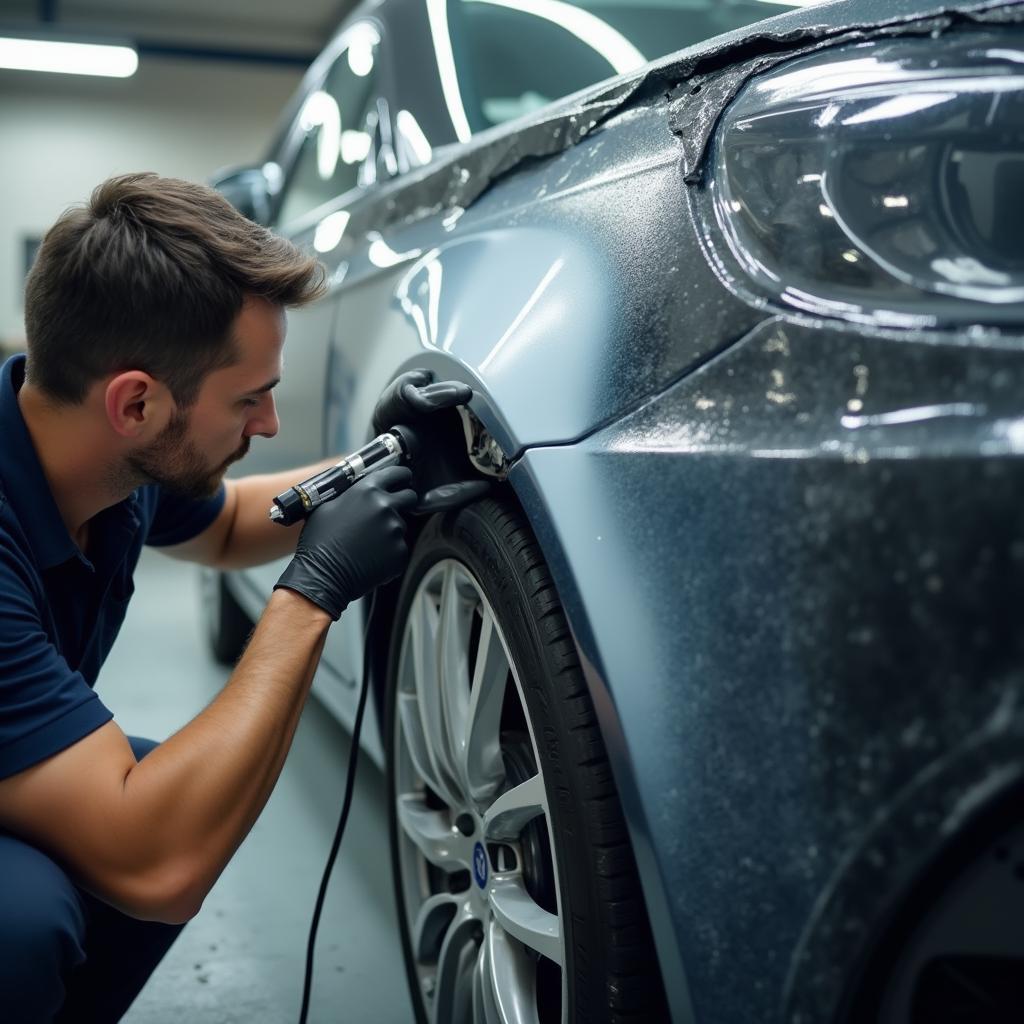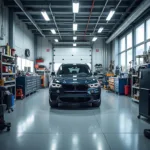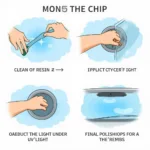You just got your car back from the shop after a fender bender, and something’s not right. The repair seems fine, but the new paint just doesn’t quite match the rest of your car. It’s a frustrating situation, especially after shelling out money for a professional repair.
Don’t worry, you’re not alone. Paint matching is a complex process, and even experienced shops can run into issues. Several factors can cause paint to mismatch after a car wreck repair. Let’s dive into why this happens and what you can do about it.
Understanding the Challenges of Car Paint Matching
Matching car paint perfectly is more challenging than it seems. Here’s why:
1. Paint Codes Aren’t Foolproof
Every car has a paint code that identifies the exact color used by the manufacturer. However, these codes are just a starting point.
- Fading: Over time, exposure to sunlight, weather, and environmental pollutants can cause car paint to fade. This means the original paint on your car might not perfectly match the factory code anymore.
- Variations: Even within the same manufacturing batch, slight color variations can occur.
2. Blending is an Art
Finding the right paint is only half the battle; blending it seamlessly with the existing paint is crucial. This requires a skilled technician who understands:
- Color Matching: Assessing the existing paint’s condition and adjusting the new paint mixture to account for fading or variations.
- Application Techniques: Applying the paint in a way that feathers the edges and creates a smooth transition.
3. Environmental Factors
Even the shop’s environment can affect the paint:
- Temperature and Humidity: These factors can alter the way the paint dries, potentially leading to inconsistencies in color and finish.
- Lighting: The lighting in the shop can make it difficult to accurately assess color matching until the car is viewed in natural light.
What to Do if Your Car Paint Doesn’t Match
If you’re unhappy with the paint match after a repair, don’t panic! Here’s what you can do:
- Talk to the Repair Shop: The first step is to discuss the issue with the repair shop manager. Explain your concerns calmly and politely. Most reputable shops stand behind their work and are willing to work with you to resolve the issue.
- Give Them a Chance to Fix It: The shop may offer to repaint the affected area, attempting to achieve a better match.
- Document Everything: Take clear photos of the paint mismatch in different lighting conditions. If you need to escalate the issue, this documentation will be crucial.
- Seek a Second Opinion: If you’re unsatisfied with the shop’s response or attempts to fix the issue, consider getting a second opinion from a different auto body repair professional.
Preventing Paint Mismatches: Tips for Car Owners
- Choose a Reputable Shop: Do your research and select a repair shop with a solid reputation for quality paintwork. Look for certifications, online reviews, and ask for recommendations.
- Discuss Your Expectations: Before authorizing any repairs, clearly communicate your expectations about paint matching with the shop.
- Consider Paint Protection: Applying a paint protection film to your car can help shield it from UV damage, scratches, and other environmental factors that contribute to fading. This can make future repairs easier and ensure a closer paint match.
Finding the Right Repair Partner
While paint matching can be tricky, it’s essential to remember that you deserve a quality repair. By understanding the challenges involved, communicating openly with your repair shop, and taking steps to protect your car’s paint, you can increase the chances of a perfect match.



